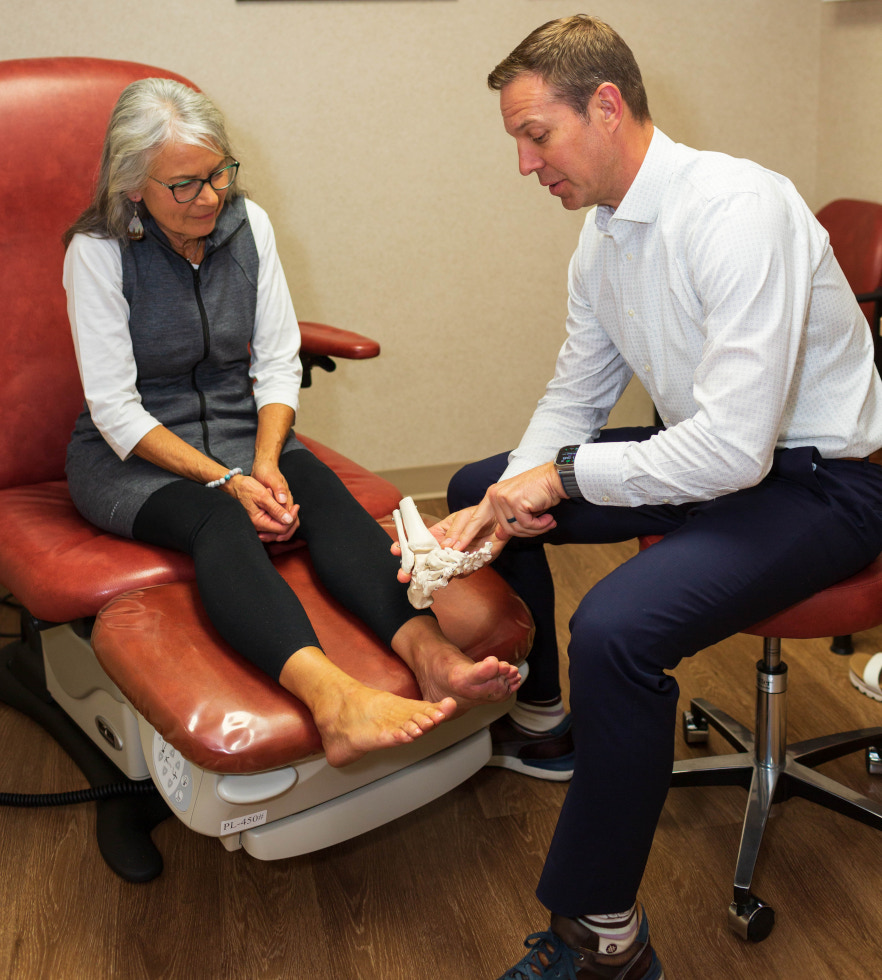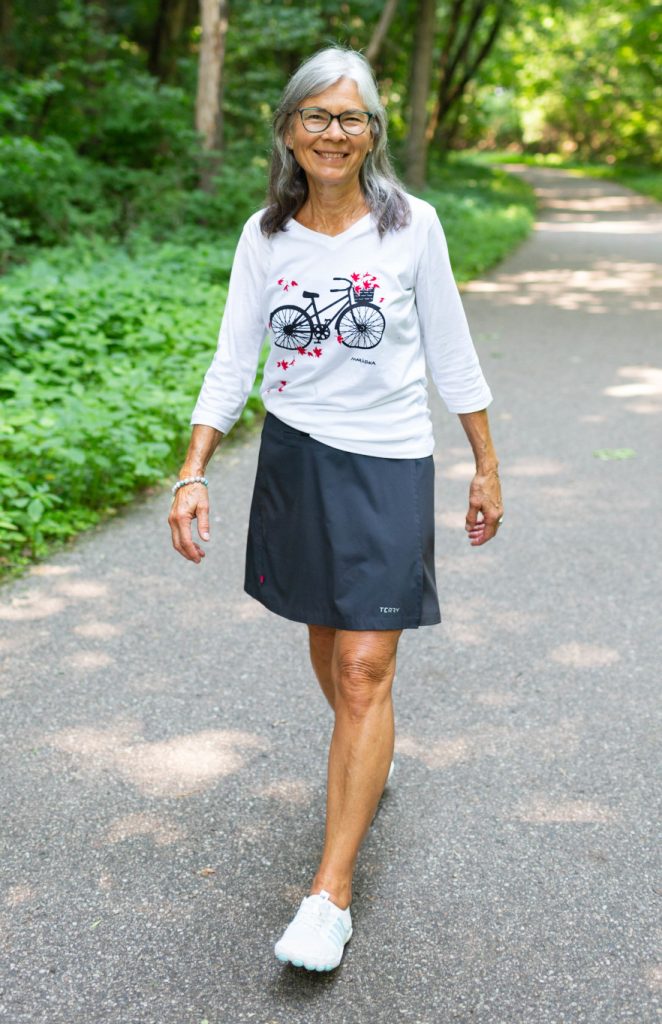Lori Bartell loves hiking, biking, cross country skiing and kayaking. In fact, she and a friend are keeping track of how many of Minnesota’s 10,000 lakes they can paddle! She also wants to learn to play pickleball and hopes to join her son on another trip to the Boundary Waters.
At age 68, the Mankato woman found foot pain was slowing her down; she travels frequently to visit her children and grandchildren, lend a hand, and celebrate moments big and small. With 21 grandchildren, her family is her passion and she plans to be there every step of the way.
“Family is a huge part of my life. I want to go along and be part of the action as long as I can,” Lori says.
Lori is also switching gears in her career. With 17 years of experience in property management, she is pursuing her Bookkeeping Certification and plans to launch her own bookkeeping business in the near future.
When foot pain worsened due to bunions, she saw Dr. Andrew Lundquist, podiatrist and foot and ankle surgeon, at Mankato Clinic.
When Lori went on longer walks or a 5-6 mile hike, her toes would burn by the end of the hike. “Sometimes it would be a 10 momentarily and then calm down. I never stopped walking, but it wasn’t comfortable,” she says.

Lori and Dr. Lundquist had in-depth discussions about various types of bunion surgeries and available options.
“We went over the risks and benefits of each surgical approach as I do with every patient. There are some benefits and drawbacks for each procedure and we weigh those carefully with the patient’s needs and expectations,” Dr. Lundquist says.
A bunion is a bony bump that develops at the base of the big toe joint when the bone or tissue at the big toe joint moves out of place. Bunions tend to run in families, which is true for Lori. The foot type is passed down, not the bunion! As the bunion grows, quickly or slowly over a lifetime, the big toe bends toward the others, causing increased pain. Surgery removes the bunion and realigns the foot.
Lori chose to have a Lapidus bunion surgery on her left foot.
“This surgery is a little more invasive and requires fusing a joint to get the correction that we want. This also requires a little longer recovery period either non-weight-bearing or limited weight-bearing,” Dr. Lundquist explains.
Dr. Lundquist has been performing the Lapidus surgery for his entire career. For the last nine years, Dr. Lundquist has offered minimally invasive surgeries. In fact, he has developed a surgical plate with Sky Surgical LLC to support minimally invasive techniques.
This fall, Lori plans to have bunion surgery on her right foot. Because the condition is less severe, she will return to Dr. Lundquist for a minimally invasive, small incision procedure. In the meantime, she plans to enjoy an active summer first!
Recovery
“As bunion surgery techniques and hardware continue to improve, bunion surgery is generally not as painful as its reputation,” Dr. Lundquist says.
Lori can attest to that. She only took Tylenol and ibuprofen for two days. “My pain was amazingly non-existent through most of this whole thing,” she says.

Before and after the surgery, Lori had a Myers’ cocktail IV infusion at Between the Bridges Healing Center. This infusion – a blend of vitamins and minerals – is considered complementary and alternative medicine and not covered by health insurance. Dr. Lundquist has observed potential benefits for patients.
“I take time to talk with my patients about pain medications. Our discussion has allowed us to cut down on the use of narcotics by at least 50-75%. We talk about normal pain levels and how to use icing, elevating, and over-the-counter medications, such as ibuprofen and Tylenol. Most patients use very little narcotics after bunion surgery,” Dr. Lundquist says.
Lori’s recovery plan required wearing a surgical boot for about 6 weeks as bones take 6 to 8 weeks to heal. Due to the type of surgery she chose, she was non-weightbearing for the first 3 to 4 weeks, using crutches or a knee scooter to get around. Then she was able to walk in the boot for another 2 weeks. At roughly 6 weeks, she was able to wear a regular shoe
“This surgery is a little more invasive and requires fusing a joint to get the correction that we want. This also requires a little longer recovery period either non-weight-bearing or limited weight-bearing,” Dr. Lundquist explains.
When it comes to shoes, Lori is good to her feet! She looks for shoes with a nice, wide toe box and seeks comfort and support. But don’t let the sensible shoes fool you – Lori isn’t one to stay in her comfort zone.
“Life is exciting. Life is an adventure. I’m ready for more!” she says.
Visit Mankato Clinic Foot and Ankle Center to learn more.

